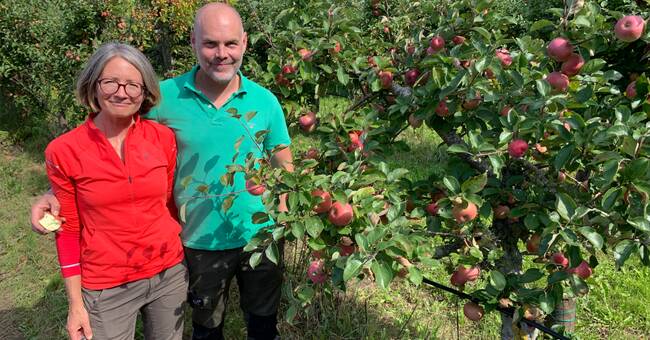The flowering in the spring was extremely intense, but it was cold and windy.
- The pollinators had a little trouble being out in connection with the flowering, says Marcus and Anna Callenbring who are organic growers on Stora Juleboda farm.
But the summer was also dry and the drip irrigation was not enough.
- It is a challenge and then you have to invest in varieties that can withstand the drought, which have large strong root systems and can withstand flowering a little later so the frost has time to pass, says Anna Callenbring.
The harvest will be normal size, maybe a little below.
- But we will have apples in stock until Easter, Marcus Callenbring thinks.
The trees need winter rest
At Balsgård, the Swedish University of Agricultural Sciences outside Kristianstad, fruits and berries are processed.
- It is milder winters and longer season.
The apples start to grow too early and then they are sensitive to frost and with a warmer climate there will be more pests, says Kimmo Rumpunen who is a researcher at Balsgård.
Drought gives mildew and in southern Europe there have been problems with sunburn on apples.
Another effect is that the plants need winter cooling.
- If they do not get it, the buds do not develop normally.
This has been seen in southern Germany, he says.
"Really good spring"
It takes five to nine years from crossing to fruit-bearing trees.
Many of the varieties used today are produced at Balsgård.
What will be this year's harvest?
-
In general, there is much better fruiting this year throughout the country, but there are many places that have been affected by frost this year as well and therefore have a reduced harvest.
Some have been affected by drought.
- I have seen quite a lot of scab, it is a real spring.
The scab fungus has been favored, which also means that many fruits are damaged, says Kimmo Rumpunen.

